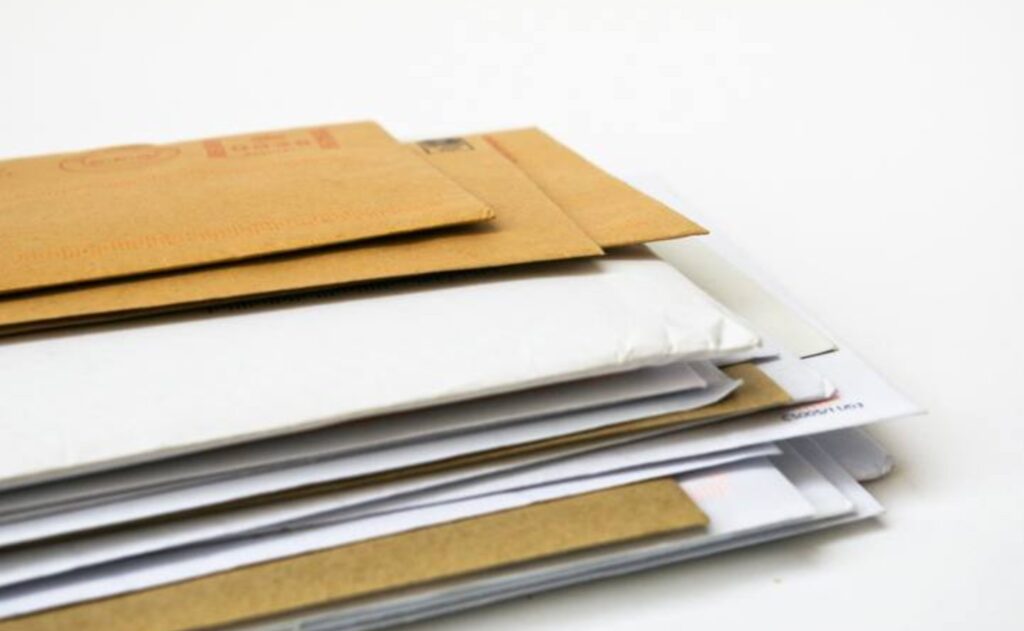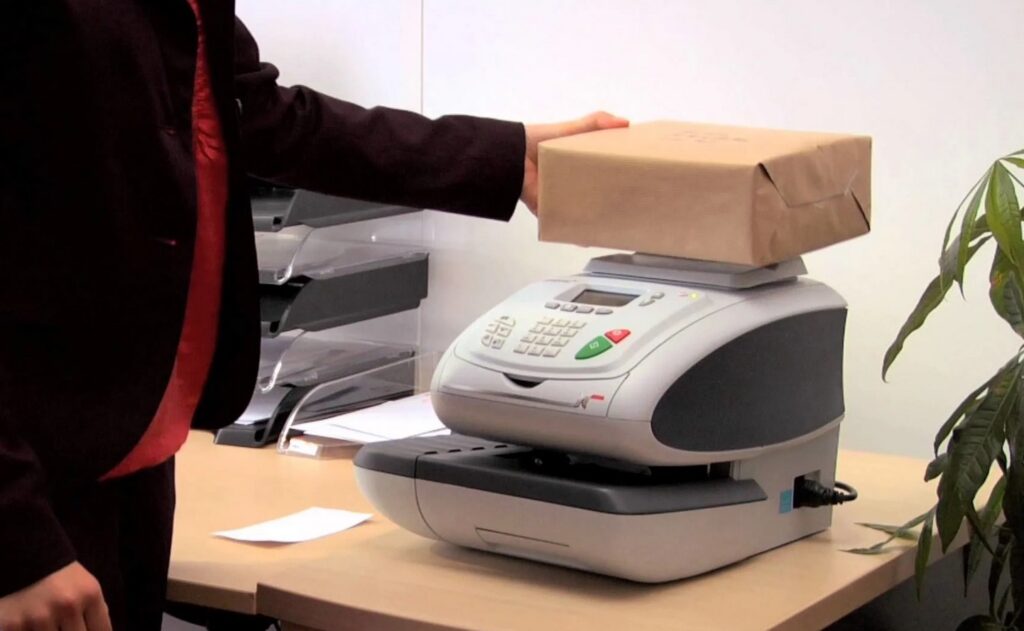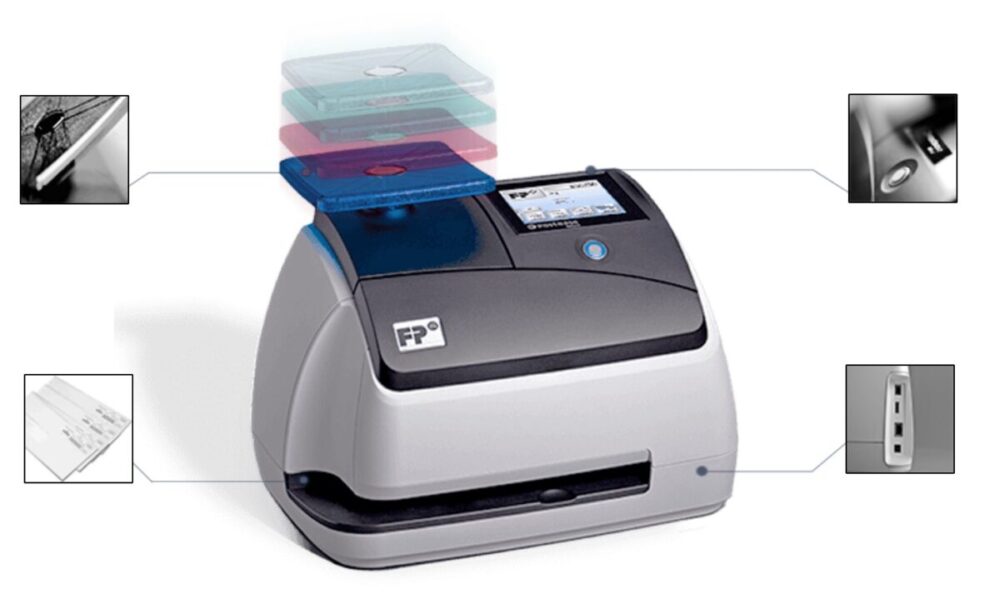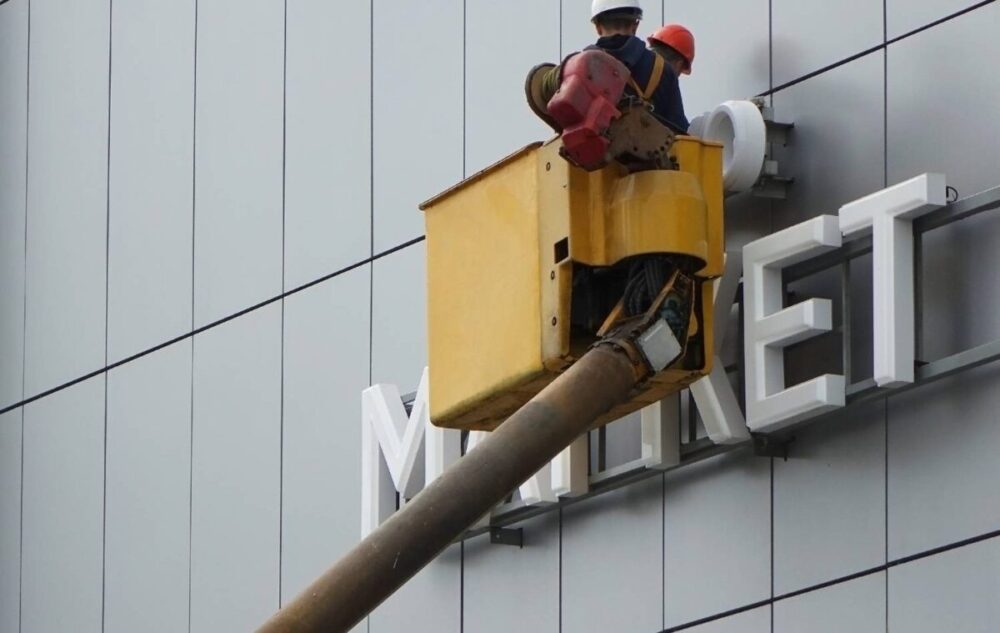A franking machine is a machine that was developed to print postage stamps directly onto envelopes without the need for an intermediary agent. Franking machines have reduced the number of staff mailrooms need to employ – thereby reducing costs for businesses who use them. The manpower required to hand stamp and write out addresses on every single parcel would be massive. Businesses across the globe rely on the British Royal Mail, of which franking machines are licensed to.
Rather than purchasing stamps and hand stamping every single parcel, businesses have savvied up to the benefit that franking machines can offer them, and instead of an entire mailroom, require only a few to maintain the franking machines themselves.
Franking machines are used throughout the world, thanks to how economically priced they have become. For you to find the right franking machine for your business, you must first establish what your mailroom’s frequency of outgoing mail is – lest you purchase (or lease) a machine gratuitously. If your outgoing mail does not warrant a franking machine, do not buy it.
This page will tell you the purpose of a franking machine – and a few other things related to this innovative piece of technology.
Development
The franking machine was first developed in the mid-to-late 1800s by Engle Frankmussler, a Norwegian mechanic and technician. The machine, still to this day, bears his name. Franking machines were first developed to prevent the security of letters and parcels from becoming compromised – as the postal system at that time was very corrupt, and mail theft was a frequent thing. Mail was often misdelivered or mistreated during its route. Frankmussler, tired of a poorly managed mail system, developed the franking machine. The machine was first displayed to the world in the German World Fair, its name at that time, the less romantic ‘Postage Stamp Affixing Machine’.
The franking machine has many competitors and market rivals – one such rival, which was developed during the lifetime of Frankmussler, was the Pitney Machine – a machine similar to Frankmussler’s own design. That machine is now used throughout North America and carries the name the American Postage Meter.

Sourcing Franking Machines
Franking machines are widely available and can be acquired in a few ways. One of the most popular methods, according to the specialists of FPmailing.co.uk, is buying them, although leasing them is also very popular. Both of these come with their advantages and disadvantages. The greatest advantage of buying a franking machine is that you will, of course, own it, and will not have to return it – nor worry too much about its maintenance, at least obsessively, as you would if you leased it. The main disadvantage is that should any damage occur, you will be solely liable and will not be able to have it covered by the provider of the franking machine. The advantage of leasing a franking machine is, simply, the disadvantage of buying one! Leasing a franking machine for many small businesses is the best option – but if you are going to lease one, be careful!
The Purpose of the Franking Machine
While the machine’s original purpose was to bring new life to the mail system at that time – and provide security – this is no longer the case. The franking machine’s original design and purpose were at that time exceptional and innovative – but now our mail system is no longer rife with corruption nor fraught with careless transporters. Its purpose no longer centers on security, but rather, cost-effectivity. Franking machines make global mail far easier (domestic, too). Franking machines are fantastic pieces of equipment that can be of a great asset should you find yourself at the helm of a business that relies on international or domestic mail to make its income.
As was briefly touched upon in the introduction, the franking machine reduces the need for staff – thereby meaning you can make more profit and payout fewer wages.

The Benefits of a Franking Machine
With the previous paragraph in mind, it is then important to further expand upon these benefits so that the reader can truly understand quite how important they are and how they are an integral part of the global business industry.
Cost Effectivity
Franking machines can reduce costs massively, and not only in the manpower of your company (as mentioned previously). In addition to this, they can save you a lot of money by simply meaning you do not have to purchase postage stamps. Postage stamps can be very expensive, especially when bought in bulk. Franking machines come with their own stamps, licensed by the Royal Mail. Meaning that it is completely unnecessary for you to invest in your own stamps. Stamps can be very expensive, and with a franking machine, you can cut down on the number of them that you buy.

Time
Franking machines significantly reduce the amount of time that your staff has to spend on each individual package, and rather, you only need one to run them through the machine and operate the machine. In the past, franking machines were required to be hand-operated, but now, many come with conveyor belts and can be programmed to automatically stamp parcels without the need for human interference or assistance. Franking machines significantly reduce the amount of time that your staff need to spend on anything and can be a great asset for any business that needs to improve the speed of their mail service.
With the above information about franking machines, we can say that without a doubt, franking machines can be a fantastic investment for your company. Their purpose is speed and time reduction, and previously for security. If you want to improve the quality of your company’s mailroom and the speed at which mail is processed, a franking machine is an investment that is well worth making. These machines are used in all sectors of business because of their many benefits – so be sure to consider making an investment for your business.





